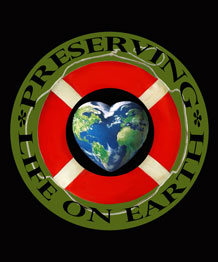CONDOMS HELP CELEBRATE EARTH DAY 2013
On Earth Day — April 22, 2013 — the Center for Biological Diversity celebrated endangered species at 20 events in 13 states across the country. More than 15,000 condoms were distributed in colorful packages (with artwork by Roger Peet) featuring species threatened by unsustainable human population growth, including the Florida panther and leatherback sea turtle. Events included a diversity of celebrations at parks, zoos, farmers’ markets, college and university campuses and more. Download our Earth Day fact sheet, which is chock-full of information on human population growth’s ecological effects.

FLORIDA PANTHER
A predator of enormous physical grace and power, the Florida panther is one of the most majestic large felines in the wild. But while Florida’s human population has nearly doubled over the past 30 years and the coasts have become more crowded, development has increasingly moved inland, coming into direct conflict with panthers and the habitat they need to survive and thrive.
This inch-tall, curly-tailed fish occurs only in shallow seagrass areas in the Gulf of Mexico, along the Atlantic Coast of Florida and in the Caribbean. Unfortunately, as the Gulf gets more crowded and industrialized, this seahorse faces more threats to its existence. Widespread loss of seagrass habitat due to pollution, boat damage and global warming is pushing this minuscule creature to the brink.
Hellbenders may not be pretty, but at 2 feet long, they’re North America’s largest amphibian. Like many amphibians, the hellbender faces extinction from the strain that the effects of human population (including pollution) put on our freshwater streams in the southeastern United States.
The western snowy plover, a pocket-sized shorebird, is surviving against the odds. Its habitat of open, sandy beaches is prime target for increasingly destructive human activity. Being small doesn’t prevent plovers from playing a big role in beach ecosystems, but it does make them vulnerable to the unnatural disturbances that plague their home.
As ancient as the dinosaurs, the leatherback sea turtle is the heaviest reptile on Earth. Leatherback turtles are dependent on seashores for their lifecycle. With half the world’s human population living within 100 miles of the coastline, their nesting grounds are severely threatened by development.
An international icon of global warming, the polar bear is going extinct as the Arctic sea ice melts beneath its feet because of the greenhouse gas emissions of 7 billion people — especially those in high-consumption nations like the United States. The bear was put on the U.S. endangered species list in 2008.







